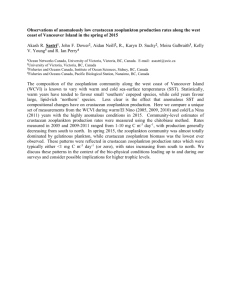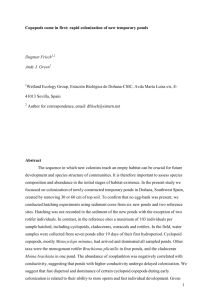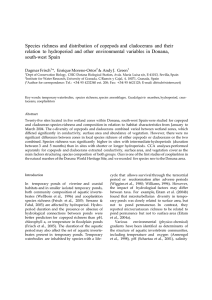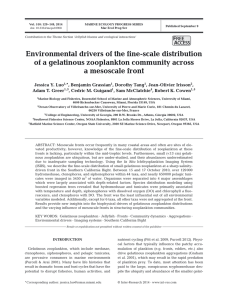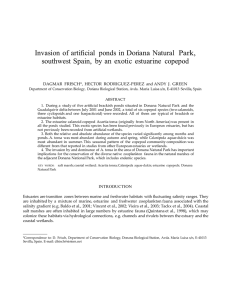ELE_1728_sm_AppendixS1
advertisement
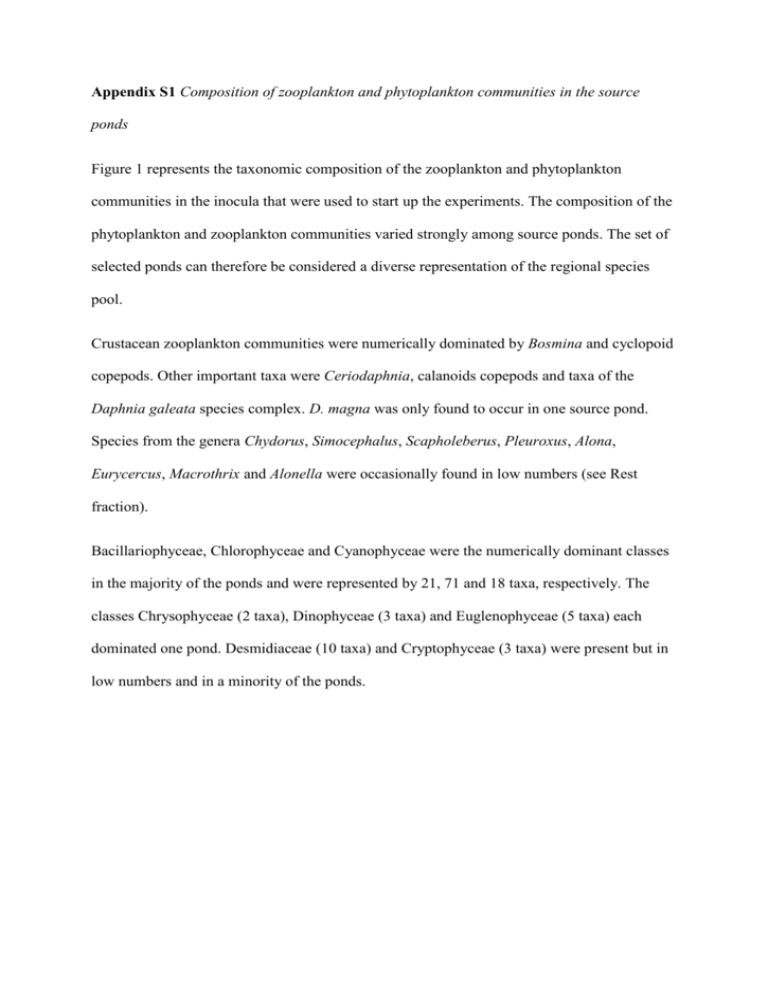
Appendix S1 Composition of zooplankton and phytoplankton communities in the source ponds Figure 1 represents the taxonomic composition of the zooplankton and phytoplankton communities in the inocula that were used to start up the experiments. The composition of the phytoplankton and zooplankton communities varied strongly among source ponds. The set of selected ponds can therefore be considered a diverse representation of the regional species pool. Crustacean zooplankton communities were numerically dominated by Bosmina and cyclopoid copepods. Other important taxa were Ceriodaphnia, calanoids copepods and taxa of the Daphnia galeata species complex. D. magna was only found to occur in one source pond. Species from the genera Chydorus, Simocephalus, Scapholeberus, Pleuroxus, Alona, Eurycercus, Macrothrix and Alonella were occasionally found in low numbers (see Rest fraction). Bacillariophyceae, Chlorophyceae and Cyanophyceae were the numerically dominant classes in the majority of the ponds and were represented by 21, 71 and 18 taxa, respectively. The classes Chrysophyceae (2 taxa), Dinophyceae (3 taxa) and Euglenophyceae (5 taxa) each dominated one pond. Desmidiaceae (10 taxa) and Cryptophyceae (3 taxa) were present but in low numbers and in a minority of the ponds. Crustacean zooplankton 100 (3) (4) (5) (3) (10) (4) (5) (4) (5) (5) (5) (1) (4) (2) (4) (1) Relative abundance (%) 80 Bosmina Cyclopoid copepods Ceriodaphnia Calanoid copepods D. galeata D. magna Rest 60 40 20 0 Phytoplankton (16) (13) (12) (22) (15) (38) (25) (19) (20) (8) (34) (28) (17) (25) (45) (13) 100 Relative abundance (%) 80 Bacillariophyceae Chlorophyceae Cyanophyceae Euglenophyceae Chrysophyceae Dinophyceae Desmidiaphyceae Cryptophyceae 60 40 20 OM4 VDDIEEx OM3 WBTWIn VBTWNa Arenberg gr ZW3 Arenberg kl ZW2 ZW1 M13 LiHas Teut5 Teut4 Teut2 Teut1 0 Figure 1. Composition of zooplankton and phytoplankton communities in the 16 ponds and lakes that were used to inoculate the mesocosms of the experiment. The upper graph represents the species composition of the crustacean zooplankton community. The lower graph represents the composition of the phytoplankton communities at the class level. Numbers between brackets above the bars represent the total number of observed taxonomical units found in the ponds.







